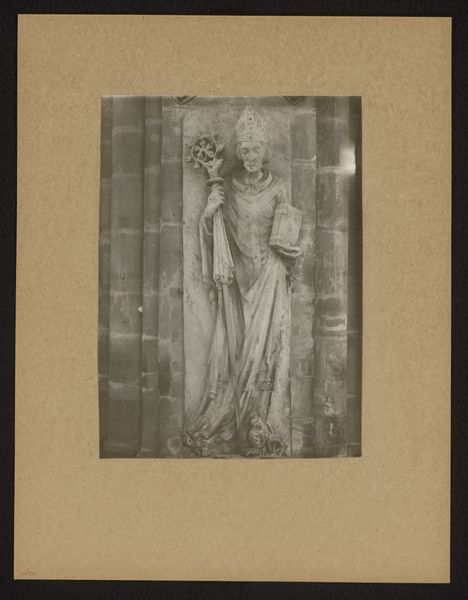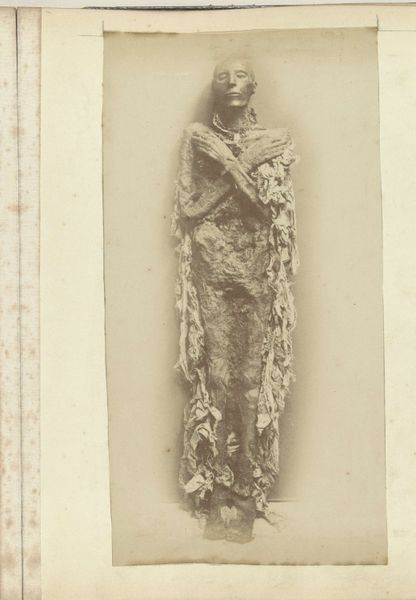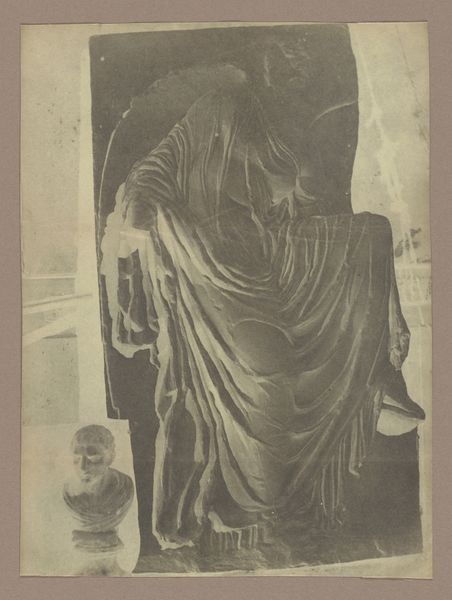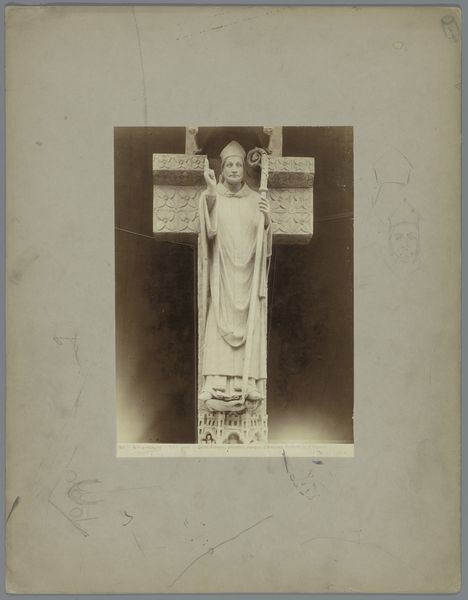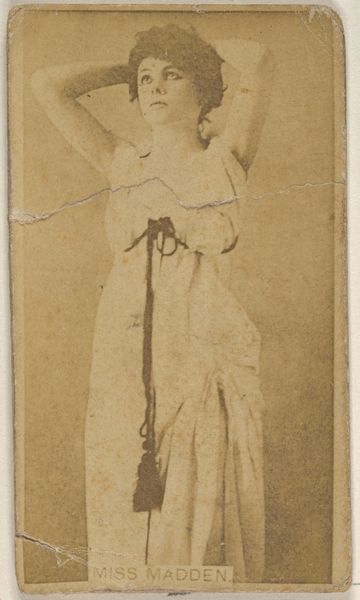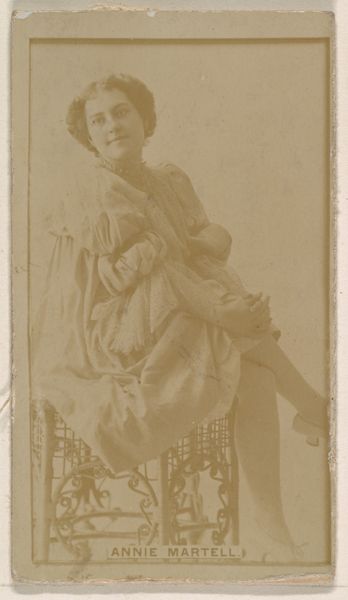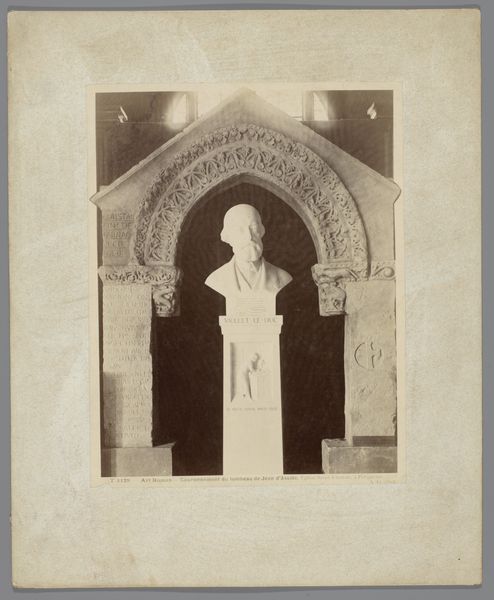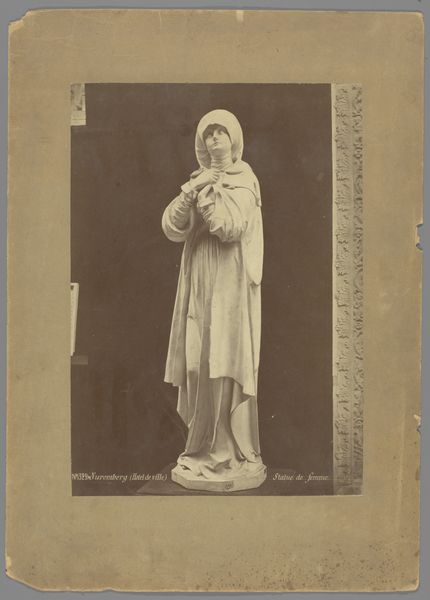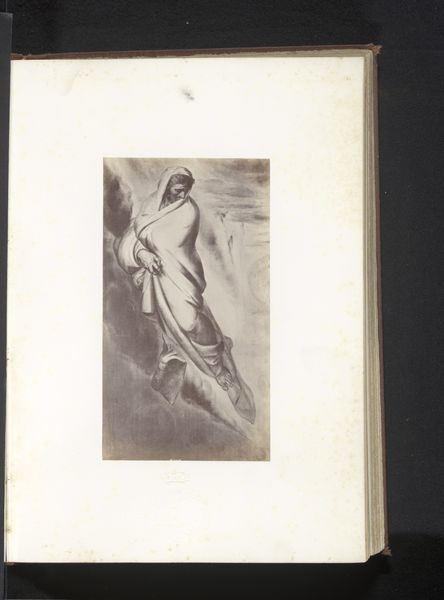
carving, photography, sculpture
#
portrait
#
medieval
#
carving
#
stone
#
photography
#
carved into stone
#
dark colour palette
#
sculpture
#
statue
Dimensions: height 238 mm, width 90 mm
Copyright: Rijks Museum: Open Domain
Curator: I see a solemn figure frozen in time. What strikes you most about it? Editor: Well, immediately the weight. The image’s monochrome palette certainly amplifies the density of the stone itself. The sitter looks imposing. Who is it? Curator: We’re looking at a photograph of a sculpture called "Beeld van Friedrich II von Truhendingen in de dom van Bamberg," which translates to "Statue of Friedrich II von Truhendingen in the Bamberg Cathedral.” It likely dates from somewhere between 1900 and 1920. Editor: Ah, a more modern photograph of a medieval subject. He certainly cuts an imposing figure with his scepter and what appears to be a model cathedral in his other hand. Curator: Precisely. And the weight, that somber gravity, I think speaks to the continuity of power—both secular and religious. Notice the placement within the architectural niche. How space itself elevates him. And his robes... each fold so meticulously carved. These details solidify an intended sense of immutable authority. The sculpture projects this idea from a distant, medieval past. Editor: But is it truly immutable? Isn't this very image a mediated representation? This photograph, taken several centuries after the carving itself, participates in constructing, or perhaps reconstructing, his power. It makes me wonder how Truhendingen was viewed in his own time versus how we perceive him now, thanks to this layering of representation. The dark color palette enhances that feeling of distance, of an almost unreachable past. Curator: I find that darkness compelling, too. It pulls at something deep—a sense of reverence perhaps, for history and tradition embodied in stone. He certainly projects a sense of unwavering purpose. He looks like the epitome of medieval leadership, wielding religious and secular authority in equal measure. The shield with emblems in the top corner reinforces it all. Editor: Agreed. Though the shield feels oddly separate – a bit of contextual branding after the fact, as it were. All in all, the photograph's muted tones certainly emphasize its solemnity, lending a specific atmosphere to how we receive the subject of power today. Curator: So it seems we can see that even within a static image, continuities and transformations of power across time coalesce, forming our experience and memory. Editor: Indeed. It gives one pause to think about the legacy of representation.
Comments
No comments
Be the first to comment and join the conversation on the ultimate creative platform.

